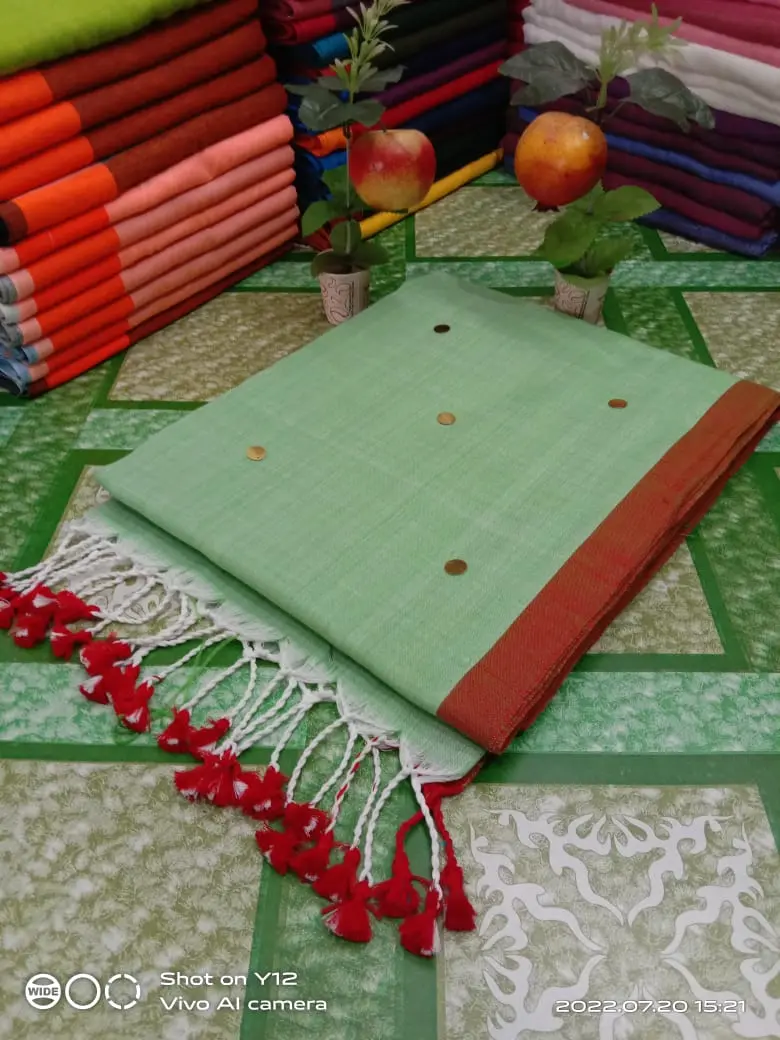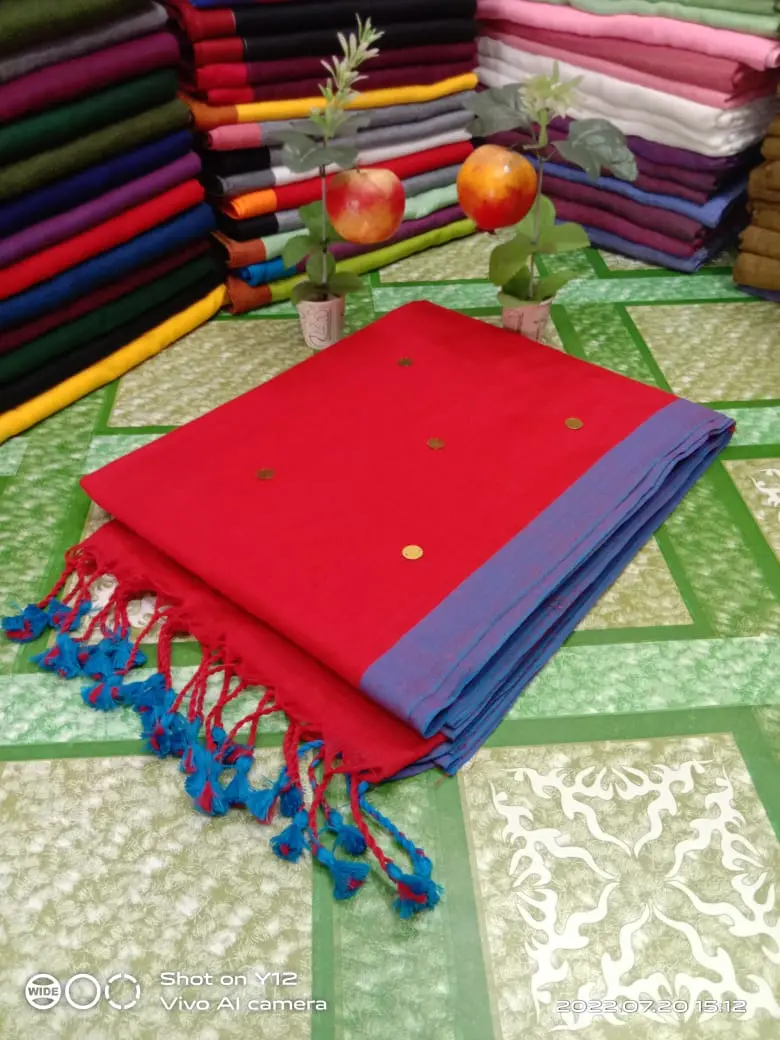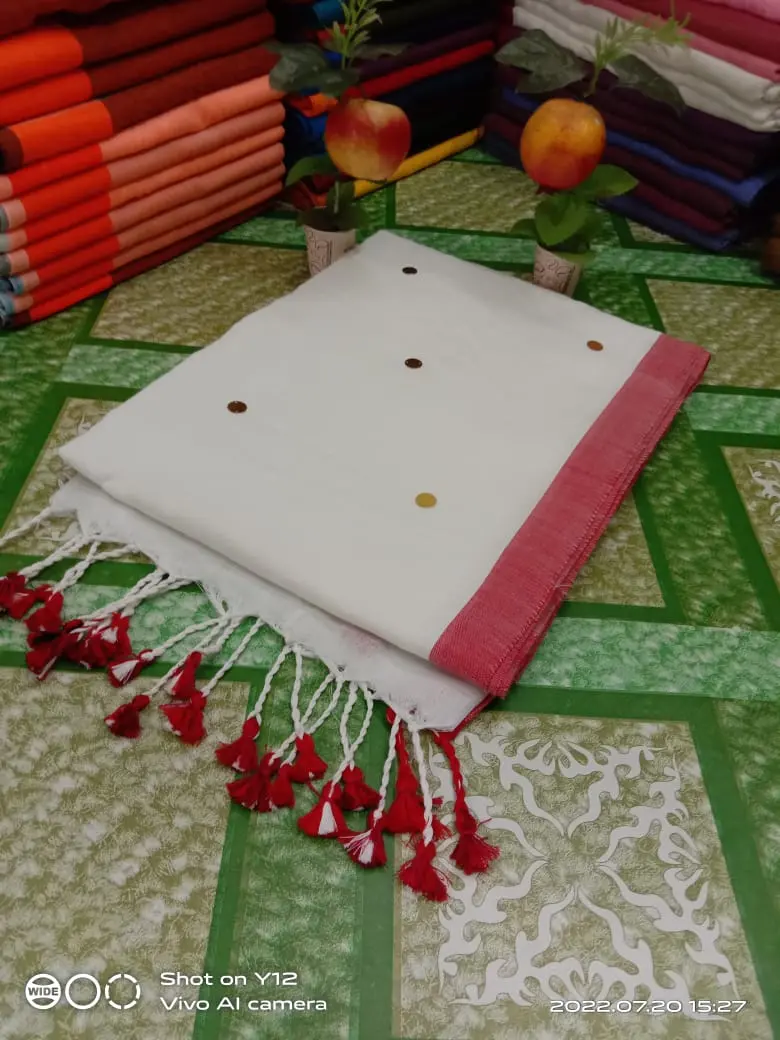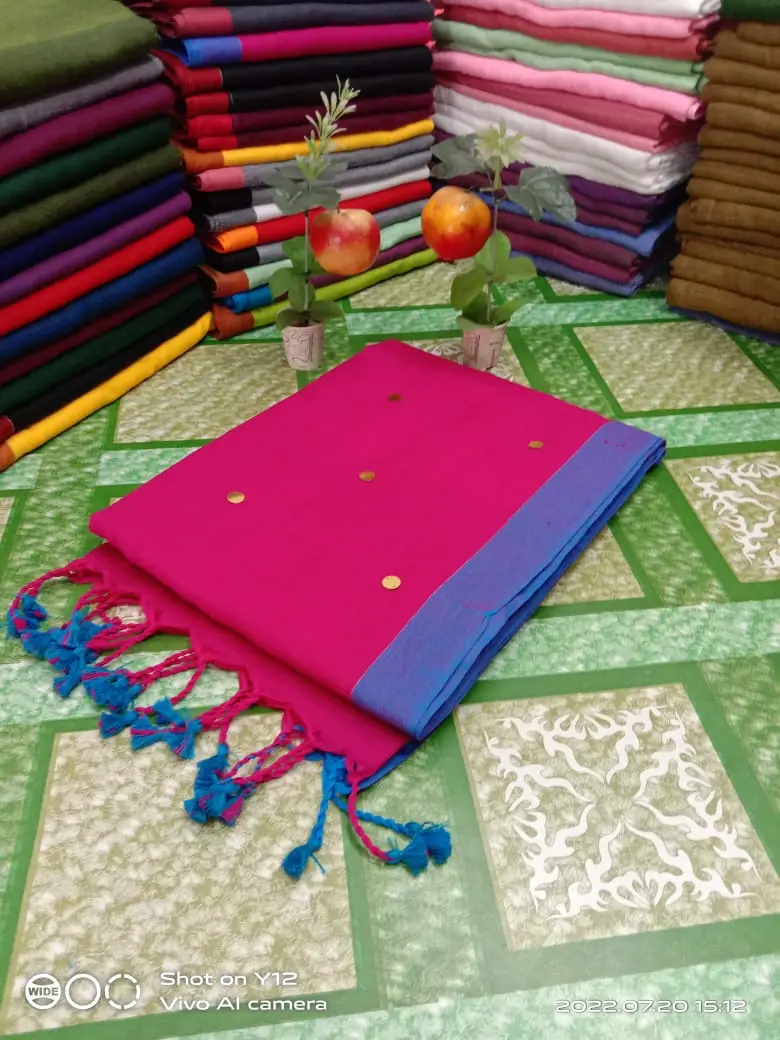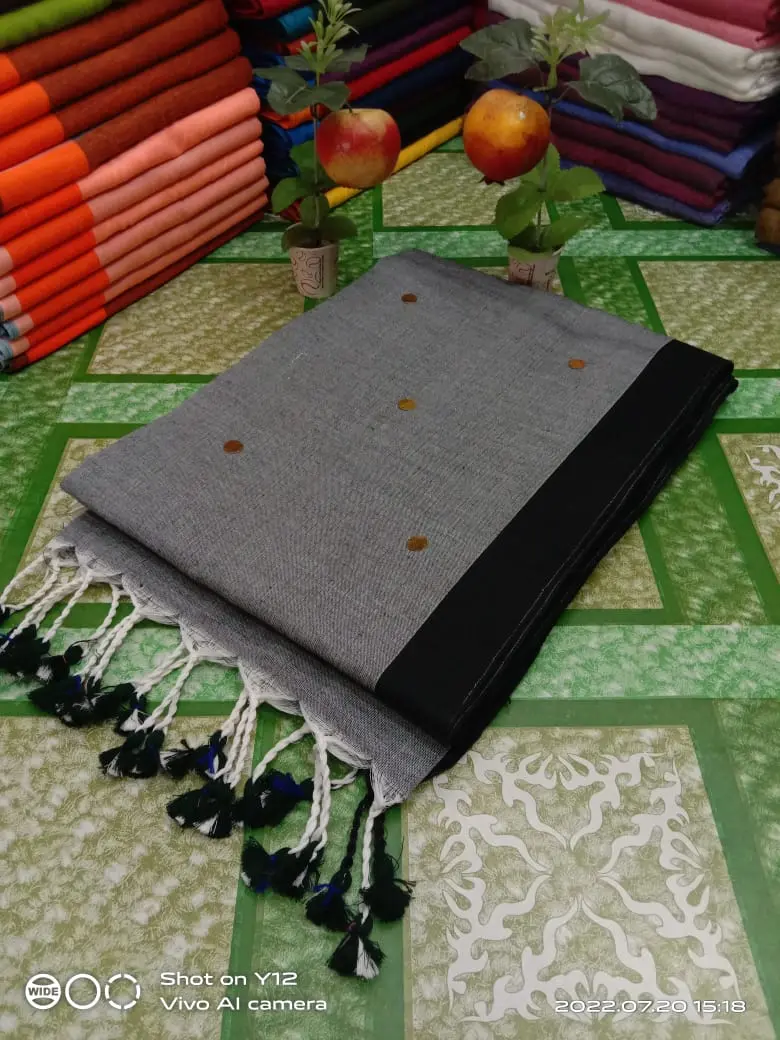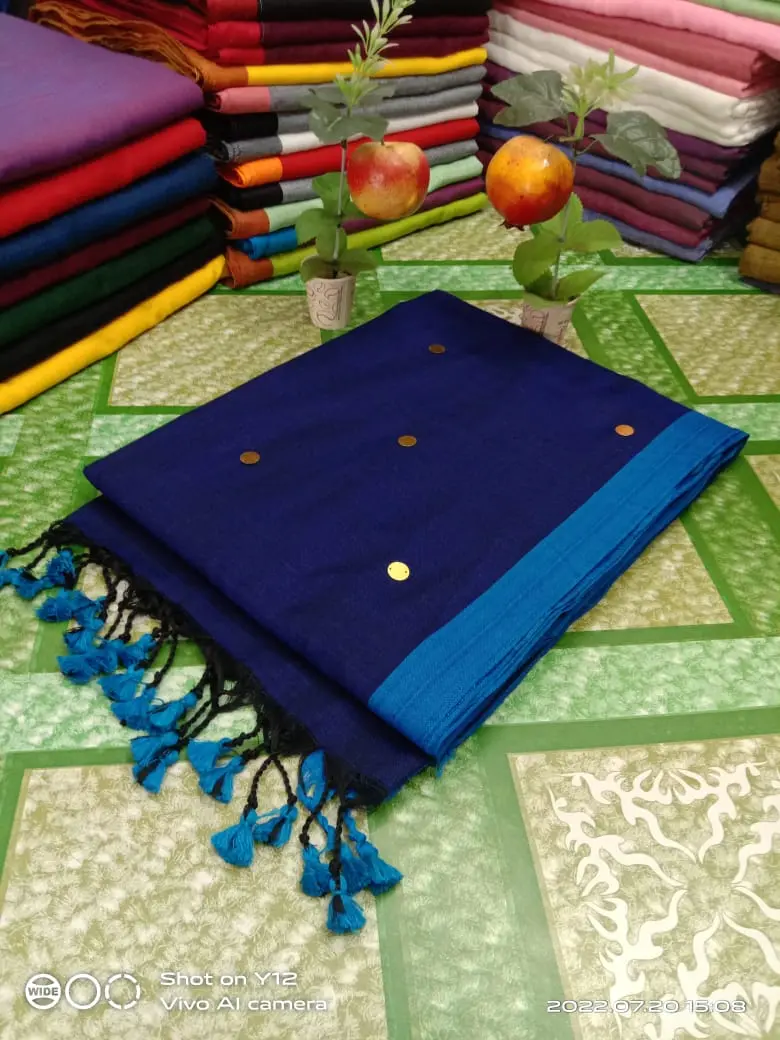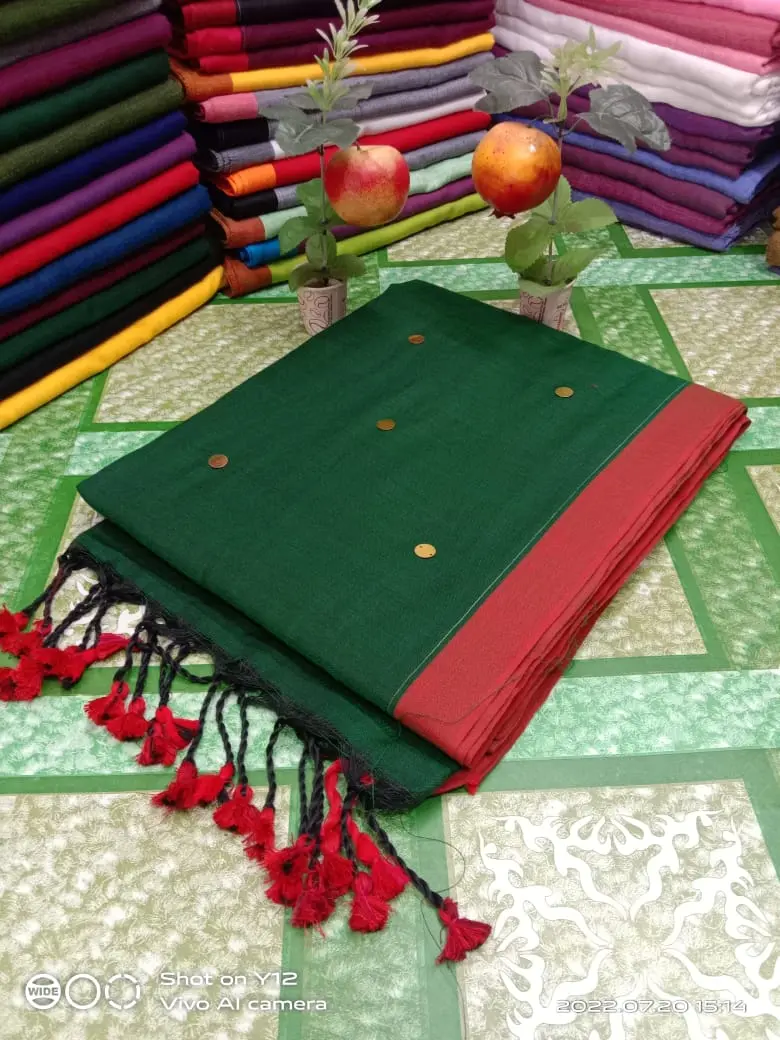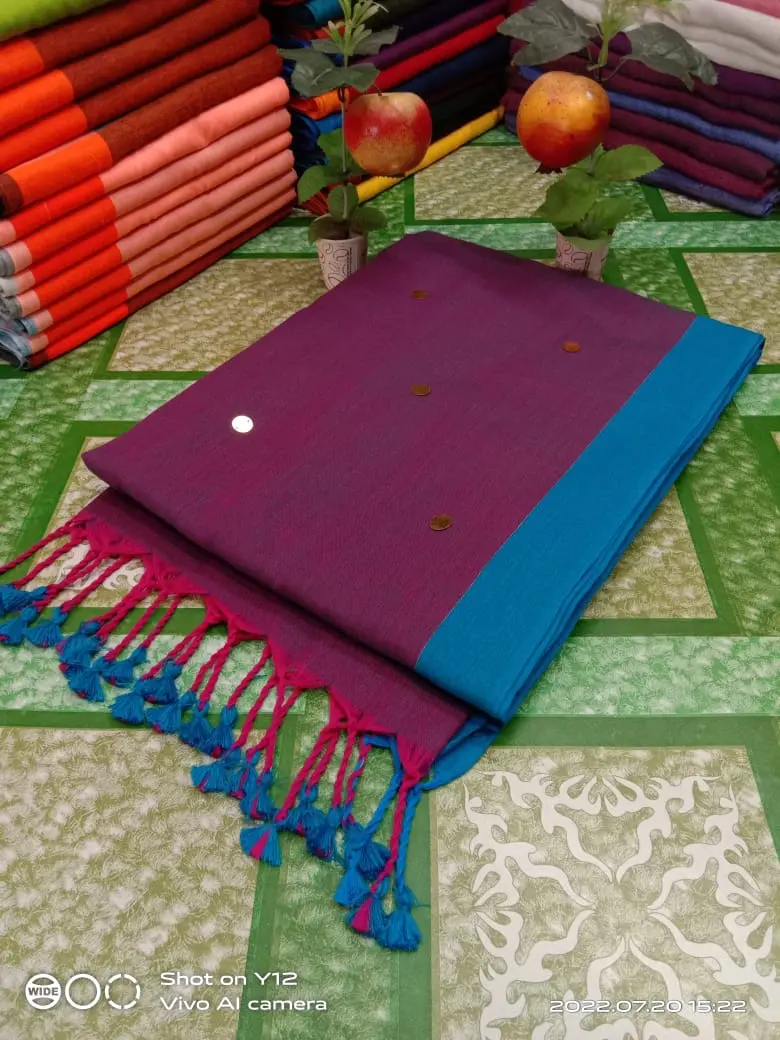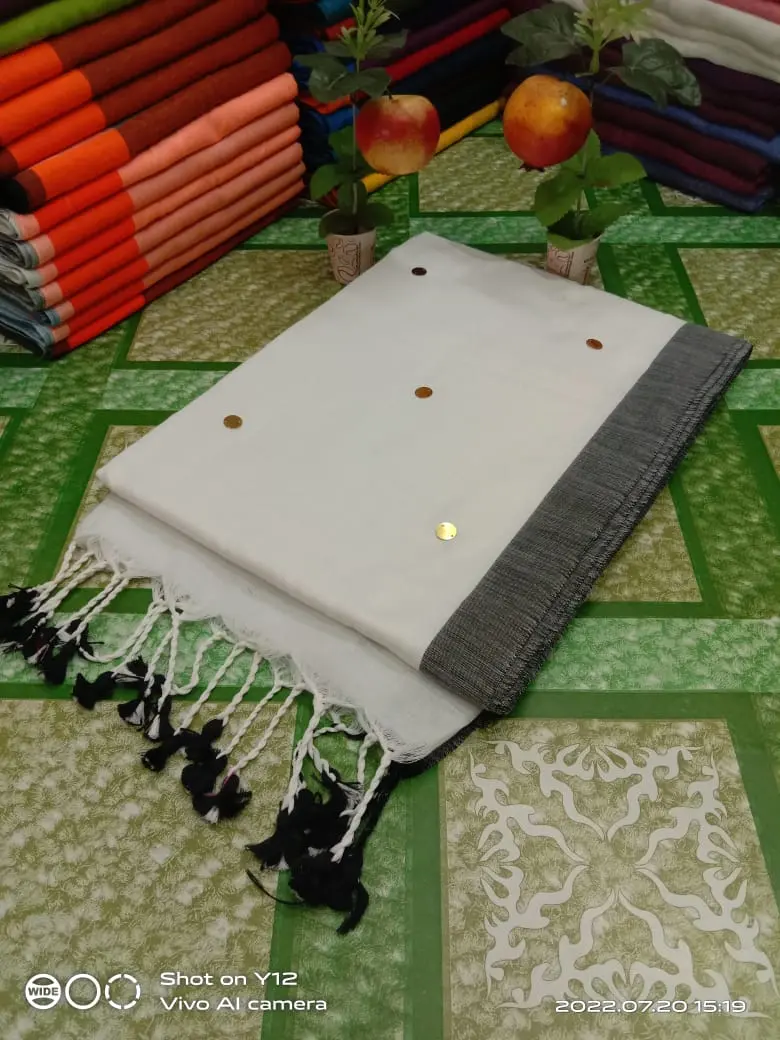Handloom Cotton Gini Work sarees embody the intricate artistry and cultural heritage of Indian textiles. The detailed craftsmanship of Gini work, characterized by fine embroidery or embellishment, transforms simple handloom cotton into exquisite attire. Here’s a comprehensive description of this beautiful combination, often seen with a matching blouse:
Handloom Cotton Gini Work Saree
1. Fabric:
Material: Handloom cotton is a hand-spun, handwoven fabric that is lightweight, breathable, and comfortable. It is known for its organic texture and natural appearance.
Texture: The texture is soft yet sturdy, with a slightly crisp feel that drapes beautifully. It offers a matte finish that enhances the embroidered Gini work.
2. Design & Craftsmanship:
Gini Work: Gini work refers to intricate, often hand-embroidered motifs or patterns that adorn the saree. This work can include detailed designs such as floral patterns, paisleys, or geometric shapes.
Technique: The embroidery is meticulously done, often involving fine threadwork, mirror work, or beadwork. This painstaking process highlights the artisan’s skill and adds a luxurious touch to the saree.
Placement: Gini work can be found on the pallu (the decorative end), borders, and occasionally scattered across the body of the saree.
3. Pattern:
Pallu (End Piece): The pallu is a focal point with elaborate Gini work, showcasing dense embroidery or intricate motifs that provide a striking contrast to the body of the saree.
Borders: Borders often feature coordinated designs with the pallu, either in simpler patterns or as a continuation of the pallu’s theme.
Body: The main body of the saree might have a more restrained design, such as small scattered motifs or a plain field, creating a balanced and elegant look.
4. Blouse:
Fabric: The blouse is typically made from matching or complementary handloom cotton fabric, ensuring a cohesive appearance.
Design: Blouses can feature Gini work on the sleeves, neckline, or back, echoing the saree’s design. They can be styled in various cuts and necklines to suit personal preferences.
Customization: Blouses can be tailored to fit different styles and occasions, adding versatility to the ensemble.
5. Color Palette:
Traditional Colors: Natural, earthy tones like off-white, beige, brown, and muted greens are common, reflecting the handloom cotton’s organic feel.
Modern Variations: Vibrant hues such as red, blue, and yellow are also used, offering a contemporary twist to traditional designs.
6. Cultural and Aesthetic Appeal:
Tradition: Handloom cotton and Gini work are deeply rooted in Indian craftsmanship, representing traditional techniques passed down through generations.
Modern Usage: The timeless appeal of this fabric and design makes it suitable for a range of occasions, from daily wear to festive events, allowing it to transcend cultural and fashion trends.
Image Description:
Illustrative Image
Saree: This handloom cotton saree features a soft, textured base with Gini work on the borders and pallu. The embroidery adds a delicate, intricate detail that enhances the fabric’s natural beauty.
Blouse: The blouse is made from matching fabric, with coordinated Gini work on the sleeves, offering a complete and harmonious look.
Care Instructions:
Washing: Gentle hand wash or machine wash on a delicate cycle in cold water is recommended. Avoid harsh detergents to preserve the fabric and embroidery.
Ironing: Use a medium heat setting for ironing. Iron on the reverse side to protect the Gini work.
Storage: Store in a cool, dry place. Fold neatly and avoid hanging for extended periods to prevent stretching.
